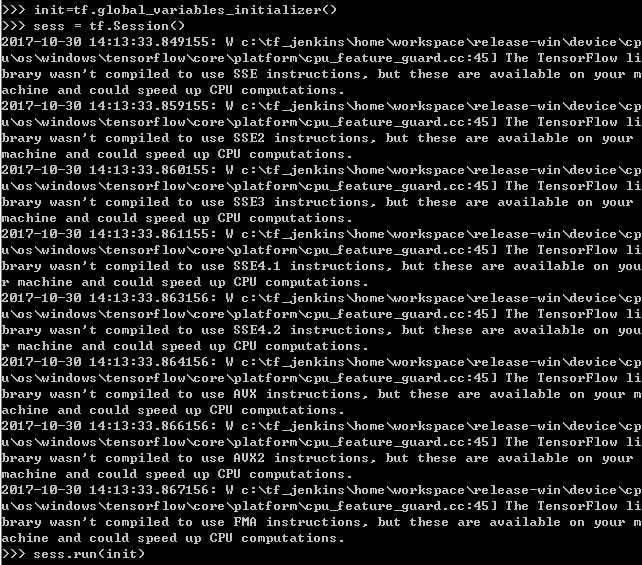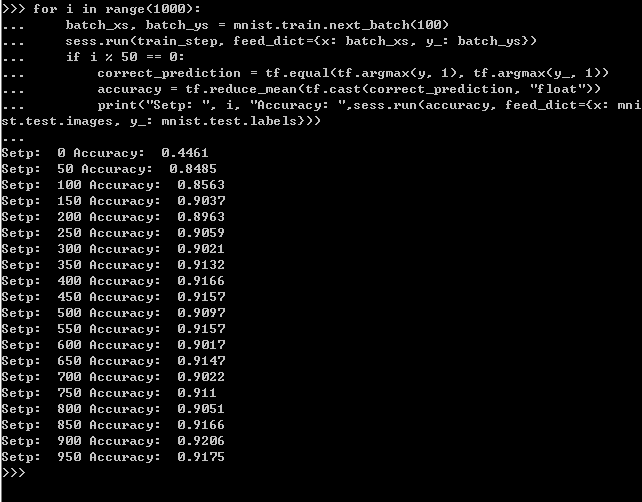import tensorflow as tf
import numpy as np
#mnist数据输入
from tensorflow.examples.tutorials.mnist import input_data
mnist = input_data.read_data_sets('MNIST_data', one_hot=True)
x = tf.placeholder("float", [None, 784]) #placeholder是一个占位符,None表示此张量的第一个维度可以是任何长度的
#
w = tf.Variable(tf.zeros([784,10])) #定义w维度是:[784,10],初始值是0
b = tf.Variable(tf.zeros([10])) # 定义b维度是:[10],初始值是0
#
y = tf.nn.softmax(tf.matmul(x,w) + b)
# loss
y_ = tf.placeholder("float", [None, 10])
cross_entropy = -tf.reduce_sum(y_*tf.log(y)) #用 tf.log 计算 y 的每个元素的对数。接下来,我们把 y_ 的每一个元素和 tf.log(y_) 的对应元素相乘。最后,用 tf.reduce_sum 计算张量的所有元素的总和。
# 梯度下降
train_step = tf.train.GradientDescentOptimizer(0.01).minimize(cross_entropy)
# 初始化
init=tf.global_variables_initializer()
# Session
sess = tf.Session()
sess.run(init)
# 迭代
for i in range(1000):
batch_xs, batch_ys = mnist.train.next_batch(100)
sess.run(train_step, feed_dict={x: batch_xs, y_: batch_ys})
if i % 50 == 0:
correct_prediction = tf.equal(tf.argmax(y, 1), tf.argmax(y_, 1))
accuracy = tf.reduce_mean(tf.cast(correct_prediction, "float"))
print("Setp: ", i, "Accuracy: ",sess.run(accuracy, feed_dict={x: mnist.test.images, y_: mnist.test.labels}))
=====================================================================================
# 评估模型
#correct_prediction = tf.equal(tf.argmax(y, 1), tf.argmax(y_, 1))
#accuracy = tf.reduce_mean(tf.cast(correct_prediction, "float"))
#print sess.run(accuracy, feed_dict={x: mnist.test.images, y_: mnist.test.labels})
=====================================================================================
附图:




